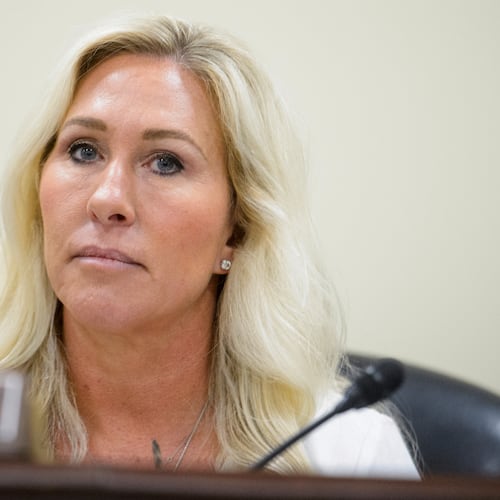PolitiFact recently checked a statement President Donald Trump made about the U.S. trade deficit with China; a West Virginia congressman's claim about the decline of U.S. manufacturing; and a top Republican Party official's comments about the census using questions about citizenship. Here are summaries of our findings. Full versions can be found at www.politifact.com.
“Last year we lost $500 billion on trade with China.”
— President Donald Trump during a news conference March 23
President Donald Trump has long bemoaned the United States’ trade deficit with China.
It turns out the numbers he cited are well off the mark.
In 2017, the value of Chinese goods imported to the United States ($505 billion) exceeded U.S. goods exports to China ($130 billion) by roughly $375 billion. So based on trade in goods, Trump’s $500 billion figure is off by $125 billion.
When you factor in goods and services, which economists say paints the fuller picture, his claim is further off. According to data from the Bureau of Economic Analysis, the United States actually ran a surplus in the services trade with China in 2017 — to the tune of roughly $38.5 billion.
When you factor that surplus into the two countries’ overall trade balance, the United States ran a roughly $336 billion deficit with China last year — which means Trump was off by about $164 billion.
Our ruling
In 2017, the value of Chinese goods imported to the United States exceeded U.S. goods exports to China by roughly $375 billion. Over that same period, the United States ran a $38.5 billion surplus on services trade with China. Overall, in terms of both goods and services, the U.S. trade deficit with China in 2017 was about $336 billion — meaning Trump was off by roughly $164 billion.
We rate this claim Mostly False.
“From 2000-10, U.S. manufacturing employment shrank by a third after holding steady for 30 years.”
— U.S. Rep. Alex Mooney, R-W.Va., in a Wall Street Journal op-ed March 25
U.S. Rep. Alex Mooney was broadly accurate when looking at raw employment totals. But the point does not hold up when you factor in population growth — a more telling statistic.
The number of U.S. manufacturing employees bounced around in a fairly narrow range between 1970 and 2000, before plunging between 2000 and 2010.
But if you adjust for the surge in U.S. population between 1970 and today, the percentage of Americans working in manufacturing actually fell consistently between 1970 and 2000. The rate of decline accelerated a bit between 2000 and 2010, but not by much. And the percentage of Americans working in manufacturing has stabilized, and actually increased slightly, since 2010.
Our ruling
Mooney’s statistic is accurate in raw numbers. The one caveat is if you measure manufacturing employment as a percentage of the population — which accounts for significant population growth over that period — you can see a steady decline going back decades.
We rate the statement Mostly True.
The census “for years and years and years, decades, has asked, ‘Are you a citizen of the United States of America?’ “
— Republican National Committee Chairwoman Ronna McDaniel in a radio interview March 28
Debate has been heating up ever since the U.S. Commerce Department announced March 26 that it plans to ask respondents to the census whether they are citizens.
Republican National Committee Chairwoman Ronna McDaniel slammed critics who oppose use of the question, saying it could lead to an undercount. McDaniel says the question has been asked for “years and years and years.”
According to our colleagues at PolitiFact National, the last time all households were asked about U.S. citizenship was in the 1950 census.
But from 1970 to 2000, the Census Bureau used two questionnaires: a long form and short form. The long form, which went out toabout 1 in 6 households, included a question on citizenship.
The 2010 census, the most recent one, only used a short form with 10 questions. None of those related to citizenship.
Since the mid-2000s, the Census Bureau has also gathered demographic and socioeconomic information through the American Community Survey. The survey collects information from about 3.5 million households a year and asks about citizenship status.
Our rating
The last time all households were asked about U.S. citizenship was in the 1950 census. But in the decades since, some version of the question has been asked in nearly every census — either through the now-defunct long form or the ongoing annual surveys.
McDaniel’s statement is accurate but needs clarification or additional information.
We rate the claim Mostly True.
About the Author
Keep Reading
The Latest
Featured



